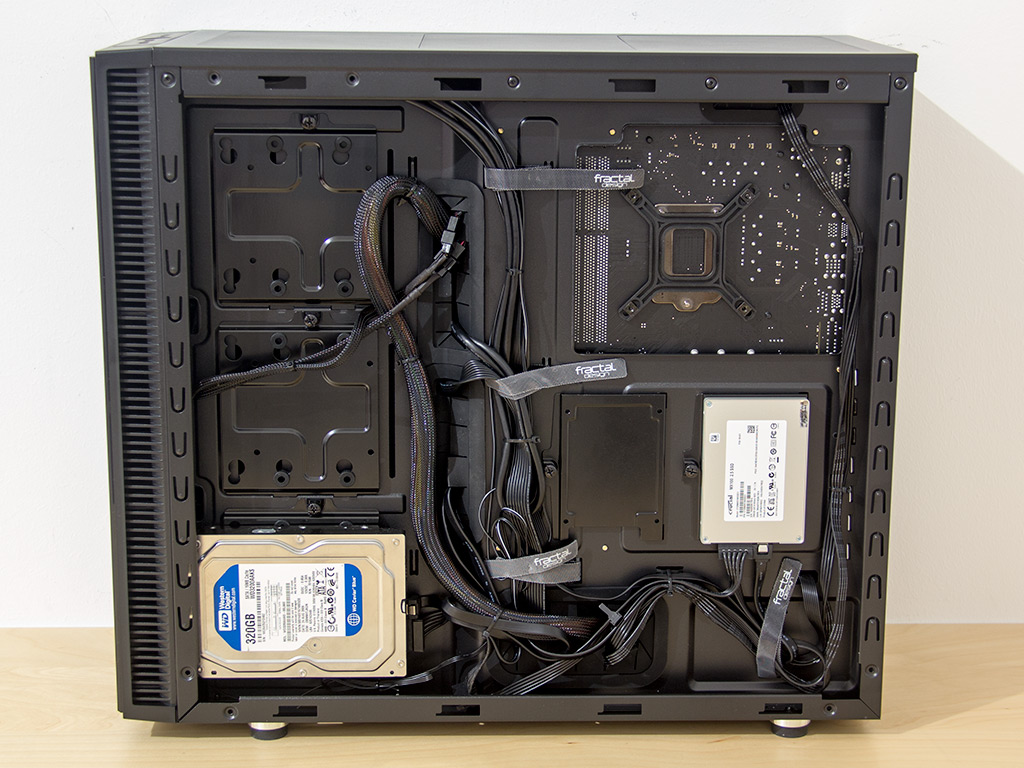- Joined
- May 18, 2011
- Messages
- 1,155 (0.23/day)
| Processor | 7800X3D |
|---|---|
| Motherboard | ASRock X670E Lightning PG |
| Cooling | Thermalright Phantom Spirit 120SE CPU cooler, 3x 140mm, 1x 120mm case fan |
| Memory | 32GB G.SKILL Flare X5 DDR5 6000 (PC5 48000) F5-6000J3038F16GX2-FX5 |
| Video Card(s) | Zotac RTX 4070 Super Trinity Black |
| Storage | 2x WD SN850X 4TB, 2TB P31 SK Hynix, WD Black 6TB, WD Red Plus 12TB |
| Case | Fractal Design Definse S |
| Power Supply | Seasonic Focus 750 |
| Mouse | Logitech Pro |
| Keyboard | Corsair Strafe Cherry MX Silent w/red LED |
| VR HMD | Meta Quest 2 |
| Software | Win 10 Pro |
Thinking of getting a new case, and I'm torn between a few of the Fractal Design cases. One which I like is the Define S, which mounts HDDs sideways on the rear of the motherboard tray:

I understand that drives should work fine while mounted upside down, sideways, ect. Though if the drives have been running in a traditional flat position for a number of years, will it be a problem when changing their orientation?
I use a number of drives, such as a Seagate 7200.11, WD FAEX Black, Toshiba P300 and WD FALS. Some of these drives are fairly old. Is there any reason that switching their orientation will degrade their life? I've read it may have been a problem for older drives in the past, but thought I'd ask anyways. I do keep my drives for a long time (5+ years).
Edit:
Drive in question:
http://i.imgur.com/P08xShg.jpg
Scroll down to post 9 for more info.

I understand that drives should work fine while mounted upside down, sideways, ect. Though if the drives have been running in a traditional flat position for a number of years, will it be a problem when changing their orientation?
I use a number of drives, such as a Seagate 7200.11, WD FAEX Black, Toshiba P300 and WD FALS. Some of these drives are fairly old. Is there any reason that switching their orientation will degrade their life? I've read it may have been a problem for older drives in the past, but thought I'd ask anyways. I do keep my drives for a long time (5+ years).
Edit:
Drive in question:
http://i.imgur.com/P08xShg.jpg
Scroll down to post 9 for more info.
Last edited:





